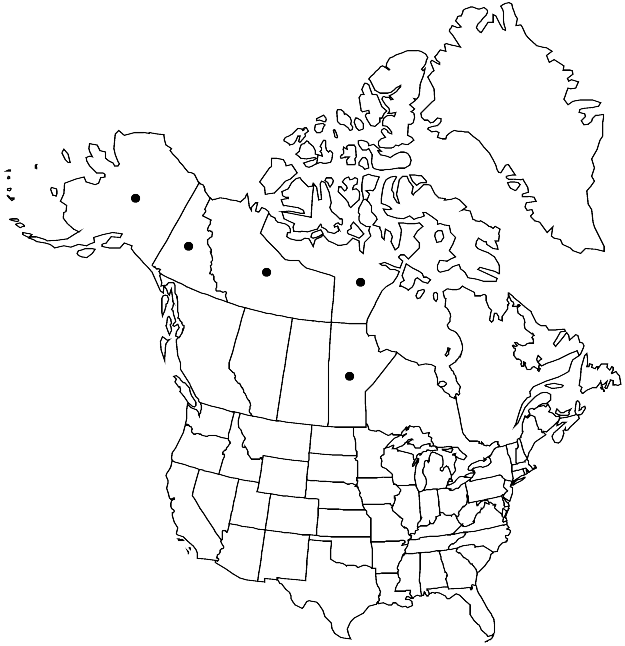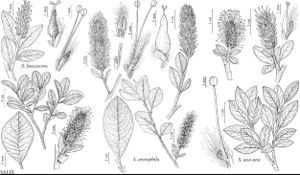Difference between revisions of "Salix fuscescens"
Monogr. Salicum, 97. 1867.
FNA>Volume Importer |
imported>Volume Importer |
||
| Line 8: | Line 8: | ||
}} | }} | ||
|common_names=Alaska bog willow | |common_names=Alaska bog willow | ||
| + | |special_status={{Treatment/ID/Special_status | ||
| + | |code=F | ||
| + | |label=Illustrated | ||
| + | }} | ||
|basionyms= | |basionyms= | ||
|synonyms={{Treatment/ID/Synonym | |synonyms={{Treatment/ID/Synonym | ||
| Line 54: | Line 58: | ||
|publication title=Monogr. Salicum, | |publication title=Monogr. Salicum, | ||
|publication year=1867 | |publication year=1867 | ||
| − | |special status= | + | |special status=Illustrated |
| − | |source xml=https:// | + | |source xml=https://bibilujan@bitbucket.org/aafc-mbb/fna-data-curation.git/src/bb6b7e3a7de7d3b7888a1ad48c7fd8f5c722d8d6/coarse_grained_fna_xml/V7/V7_70.xml |
|genus=Salix | |genus=Salix | ||
|subgenus=Salix subg. Chamaetia | |subgenus=Salix subg. Chamaetia | ||
Revision as of 23:59, 27 May 2020
Plants 0.15–0.55 m, forming clones by layering. Stems decumbent or trailing; branches yellow-brown, glabrous; branchlets red-brown, gray-brown, or yellow-brown, glabrous. Leaves: stipules absent or rudimentary; petiole 2–5.6(–6.4) mm; largest medial blade hypostomatous, narrowly oblong, oblong, obovate, or broadly obovate, (14–)17–27(–45) × 7–21 mm, 1.4–2.5 times as long as wide, base cuneate or convex, margins slightly revolute or flat, entire, or serrulate to crenate proximally, (glands marginal), apex convex, acuminate, or rounded, abaxial surface glaucous, glabrous, adaxial slightly or highly glossy, glabrous; proximal blade margins entire, (sometimes hairs ferruginous abaxially); juvenile blade glabrous. Catkins: staminate 8–58 × 5–19 mm, flowering branchlet 0.5–15 mm; pistillate moderately densely to loosely flowered, slender, stout, or subglobose, 13.5–64(–70 in fruit) × 6.5–15 mm, flowering branchlet 4–18 mm; floral bract brown or bicolor, 0.8–1.6 mm, apex rounded, entire, abaxially sparsely hairy, hairs (usually white, sometimes also ferruginous), wavy or straight. Staminate flowers: abaxial nectary absent, adaxial nectary oblong, 0.5–0.8 mm; filaments distinct or connate less than 1/2 their lengths, glabrous; anthers ellipsoid or shortly cylindrical, 0.3–0.4 mm. Pistillate flowers: abaxial nectary absent, adaxial nectary oblong, 0.4–0.9 mm, shorter than stipe; stipe 0.8–2.5 mm; ovary obclavate, pubescent or short-silky to glabrescent, hairs (often ferruginous), flattened or ribbonlike, beak abruptly tapering to styles; ovules 8–12 per ovary; styles connate or distinct distally, 0.1–0.4(–0.65) mm; stigmas slenderly or broadly cylindrical, 0.24–0.3–0.68 mm. Capsules 5.5–8 mm. 2n = 38.
Phenology: Flowering Jun-late Jul.
Habitat: Bogs, treed bogs, sedge fens, poorly drained lakeshores, wet tundra, silt or fine sandy-gravel substrates
Elevation: 50-1000 m
Distribution

Man., N.W.T., Nunavut, Yukon, Alaska, e Asia (Chukotka, Japan [Hokkaido], North Korea, Russian Far East, arctic, e Siberia).
Discussion
Hybrids:
Salix fuscescens forms natural hybrids on the arctic coast of Alaska with S. arctica, S. ovalifolia, and S. phlebophylla, and in continental Nunavut with S. herbacea. These hybrids are not usually recognized but they appear sporadically.
Salix fuscescens × S. herbacea has crenate margins and is often confused with the latter species.
Some specimens identified as Salix fuscescens × S. ovalifolia are similar to hybrids with S. phlebophylla, but they lack marcescent leaves.
Salix fuscescens × S. phlebophylla has obovate leaves with one or two pairs of serrulations proximally, and glaucous abaxially as in S. fuscescens, but it grows in relatively dry tundra and has the marcescent, sometimes skeletonized, leaves of S. phlebophylla.
Selected References
None.
